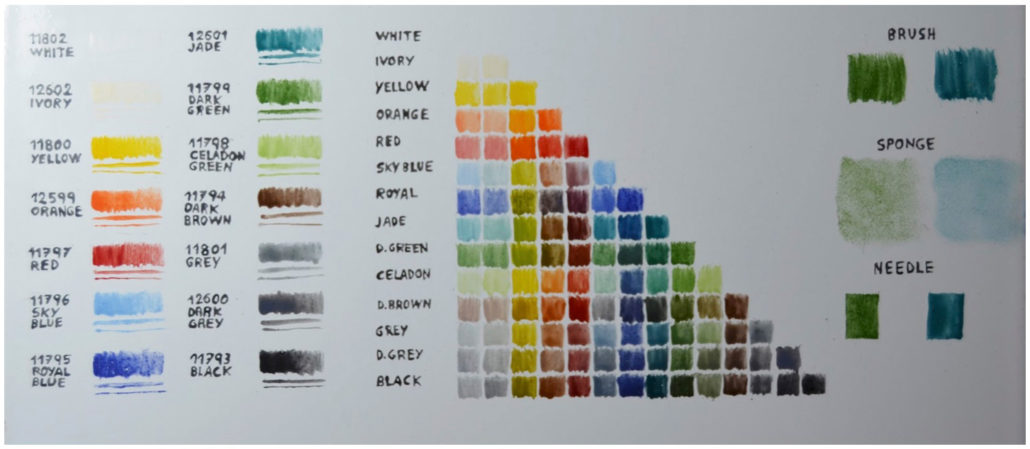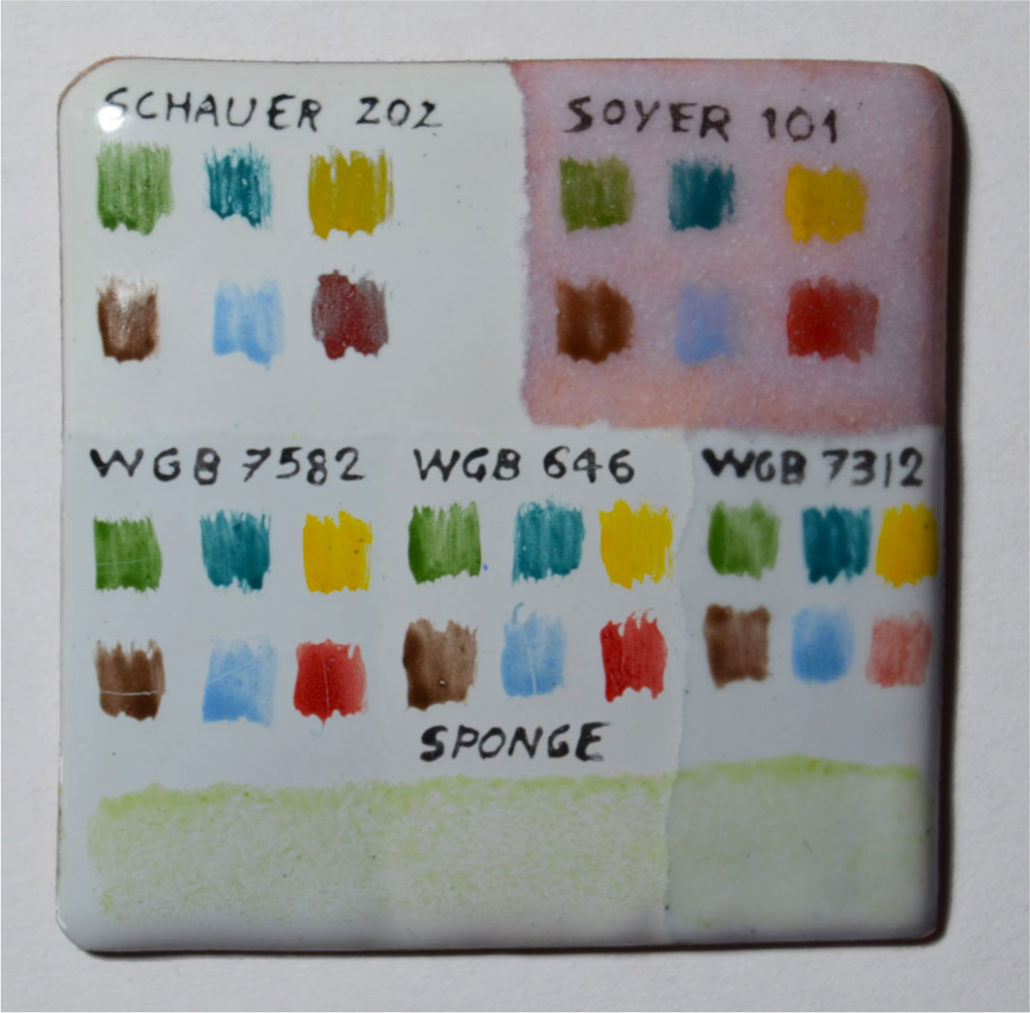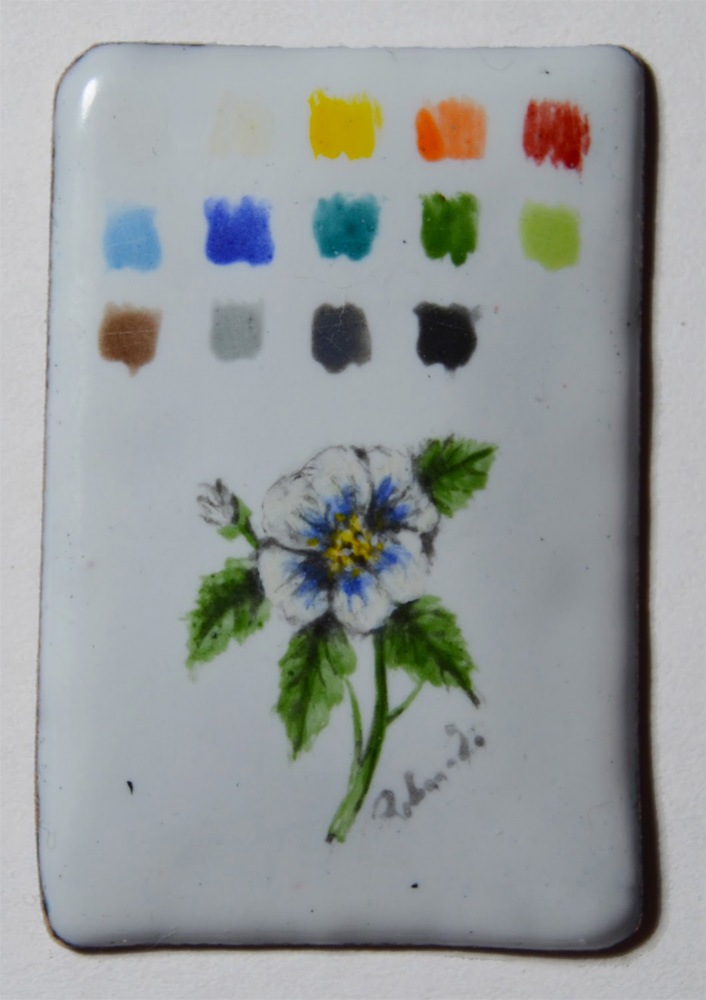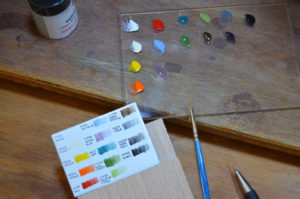A Review of Lead-Free Enamel Painting Colours
Review by Rebecca Di Filippo
After working for years with different Onglaze enamels with and without lead like Sunshine by Ferro, Heraeus, Schjerning, Bombino and Sebino, I am happy to have tried the lead-free enamels for enamel painting by W.G Ball. I did several tests on different bases to get a more general idea of the product. The medium they are sold with is really easy to apply in a uniform layer, which is ideal for beginners. In the same way, it is easy to make thin lines, work with thin or thick layers. A very dense or more liquid colour can be obtained by dosing the medium and the thinners, also influencing the drying times. I usually prefer ”never-dry” mediums that don’t dry even after months, but it was pleas- ant and easy to work with this medium. The medium is suitable for use with brush, sponge, quill pen and needle.
Figure 1: Pre-made tile (you can buy it from WGB). One thick layer of painting enamel and one firing at 800 ◦C
VIEW GALLERY >
All the enamels are very shiny after fired. Ivory and blue seem to be harder than others. In fact, in the test made on a pre-enamelled tile (the largest in the picture) where they have been applied quite thick (to test their expansions), and fired only once, they turn out slightly less shiny than others. In pieces fired more than once they are as shiny as the others (from the second fire).
The colours are very covering, especially if used on a white base: if you want to work with thin layers and obtain soft shades, I recommend choosing the white 7312 WGB (opaque, but slightly opalescent) applied directly on copper (this enamel is very resistant and doesn’t turn green easily even if applied thin). This white makes the colours even shinier. Reference: plate with the flower made in three firings, excluding the preparation of the base. The colour palette was made in one layer and fired three times, the flower with three thin layers. The red colour is surprisingly resistant even if fired several times and applied in thin layers as it can be seen from different tests. It doesn’t react well on the white Schauer 202: although it is compatible it tends to burn faster. If a layer of Soyer 101 is applied over the Schauer 202 enamel, this defect disappears.
Figure 3: Palette and enamel miniature on Foundation White 7312 WGB. One layer of enamel for the palette, three thin layers for the flower. Fired three time at 800 ◦C
VIEW GALLERY >
The enamels have been tested on different bases to test their compatibility, which is very good both on lead enamels and without. Personally, I had difficulty using them on the 7582 WGB base: in some colours, there were some white ”lines” that show imperfect compatibility. These lines disappear if the enamel is applied in thinner layers. Further- more, this base has a very cold tone.
The tests were made with the original mesh. Personally, if I had to use these colours for my usual miniatures, which are very very small, I would grind them a little bit more, as I’m used to old onglaze enamel with very thin mesh.
All the colours are very beautiful and vivid. Yellow, ivory and jade are my favourites. Blue and red are compatible and you get a nice purple tone. The only thing I don’t like about these colours is blue being lilac before firing. This is common in opaque enamels, but in the case of painting enamels it makes difficult to work, especially when you need to mix it with other colours.
The value for money is noticeable. They are very convenient. Another reason why I think they are perfect for beginners! I recommend buying the entire colour palette. I used them in powder form, which I prefer because I can handle it better, but they are also available already mixed, ideal for those who have difficulty dosing the medium.





































